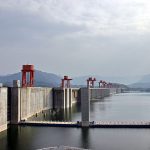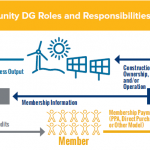List of Hydroelectric Stocks
Hydroelectric stocks are publicly traded companies whose business involves converting the energy of falling water into electricity.
This list was last updated on 11/20/2020.
Andritz AG (ADRZF,ANDR.VI)
Brookfield Renewable Energy Partners (BEP)
Contact Energy Limited (CEN.NZ, COENF)
Genesis Energy (GNE.NZ)
Innergex Renewable Energy Inc. (INE.TO, INGXF)
Iniziative Bresciane S.p.A. (IB.MI)
Companhia Energética de Minas Gerais (CIG)
Mercury NZ Limited (MCY.NZ)
Meridian Energy (MEL.NZ)
National Hydro Power Corporation (NHPC.NSE)
National Thermal Power Corporation (NTPC.NSE)
Reservoir Capital Corp. (REO.CN. RSERF)
RusHydro (HYDR.L, RSHYY)
Satluj Jal Vidyut Nigam Limited (SJVN.NSE)
Trustpower (TPW.NZ)
Verbund, AG (VER.VI, OEZVY)
If you know of any hydroelectric stock that is not listed here and should be, please let us know by leaving a comment. Also for...
Water Treatment With a Latin Beat
by Debra Fiakas, CFA
The post “Water: Invisible Crisis” on December 6th highlighted the building problem of inadequate supplies of quality water in Latin America. The World Water Council’s Comision Nacional Del Agua reports that As much as one-third of the Latin America population lacks access to safe water. Unabated pollution and lack of water treatment have been identified as culprits. In South America, for example, 40% to 60% of water comes from aquifers that are subject to increasing pollution from untreated run-off from mining and agriculture operations.
Our survey of Latin America water sector in South America found an interesting mix of pollution abatement and water treatment...
Buying Innergex – Texas Was Bad, But Not That Bad
By Tom Konrad, Ph.D., CFA
Last week, I published this call to buy Innergex (INGXF, INE.TO) because investors had been overreacting to the losses from the February cold snap in Texas. The stock is up since then, but still seems a decent value.
Canadian Yieldco Innergex Renewable Energy (INGXF, INE.TO) took a big financial hit from the power disruptions in Texas in March.
It's complex, but their financial hedges on power prices for three of its wind farms ended up creating enormous liabilities - more, in fact, than two of their wind farms are worth. Two of their facilities also had benefits...
What A Portfolio Approach To Climate Policy Means for Your Stock Portfolio
Portfolio theory can lend insights into which carbon abatement strategies policymakers should pursue. If policymakers listen, what will it mean for green investors? Tom Konrad, Ph.D., CFA Good Info, Not Enough Analysis I've now read most of my review copy of Investment Opportunities for a Low Carbon World. The quality of the information is generally excellent, as Charles has described in his reviews of the Wind and Solar and Efficiency and Geothermal chapters. As a resource on the state of Cleantech industries, it's generally excellent. As an investing resource, however, it leaves something to be desired. Each chapter is written...
Clearing Up Some Confusion Over Community Solar In New York
Community Solar in New York has a messaging problem. It is confusing, and even some industry professionals have given up in disgust because of aggressive marketing and a lack of clarity.
Fortunately, aggressive marketing is not universal among community solar developers.
Unfortunately, the lack of clarity is almost universal.
How Community Solar Works in New York
The system the New York utility regulator set up for community distributed generation (CDG, a term which includes community hydropower and community wind as well as community solar) is counter intuitive for most potential customers.
As shown in the diagram above, the electric utility pays for a project's...
Hydropower: The Renewable Energy Elephant in Room
There is a form of renewable energy which accounts for approximately one sixth of world electrical generation, and unlike wind and solar has a natural form of storage which costs a fraction of any other form of electricity storage, and has black start capability. Given all these positive characteristics, it may seem surprising that we have not yet written about it. The renewable energy in question is Hydropower, and the reason we've not covered it before is that the facilities are typically owned and run by governments or diversified utilities. Until now, the only Hydropower investments I have been...
Another Look at the Algonquin Power Income Fund
Tom Konrad, Ph.D., CFA The Algonquin Power Income Fund (AGQNF.PK) has been one of my star performers in an excellent year. Is it still a good investment at these prices? Since I recommended the Algonquin Power Income Fund (AGQNF.PK/APF-UN.TO) in January as a renewable energy income stock for 2009, the company is up 69%, in addition to the C$0.02 monthly dividend, worth approximately another 8% through August on the US$1.82 purchase price, making it the second-best performing of my ten picks (after Cree, Inc (CREE).) However, since the major basis for my recommendation at the time was the...
Administration Lays the Groundwork for Hydropower Boom
Tom Konrad CFA The US Department of the Interior, the Department of Energy (DOE), and the US Army Corps of Engineers are quietly laying the groundwork for a renewable energy boom that you might not expect. What they've done is announce a memorandum of understanding to work together to support environmentally sustainable hydropower. They're not talking about building new dams, which have questionable environmental benefit, but rather to remove barriers to developing cost-effective hydropower at existing dams and waterworks. Hydropower does not get much attention from investors. In large part, that's because of the lack...
Newsweek Special Report
"Experts generally agree that our current reliance on fossil fuels is unsustainable. Already oil is near $50 per barrel, and the great millions of Chinese and Indians destined to take to the road in the next decades have not yet gotten behind the wheel." This week Newsweek has written several special reports about alternative energy in all its forms. All of these reports can be found at the following link.
Large Hydro Power: The Underloved Energy Source
Charles Morand While browsing Cleantech News, I came across an interesting post on Energy Outlook on the lack of attention hydro power is receiving in the latest of round of policy efforts aimed at greening the U.S.' energy supply and combating climate change. Besides having been been scuffed at in Waxman-Markey, hydro power has effectively been ignored in the ARRA, receiving a measly $32 million, peanuts in comparison to the $786.5 million awarded to biofuels, the $350 million for geothermal power and the $117.6 million going to solar. Not mention the millions of dollars that will flow...
Must Renewable Energy Be Diversified?
Dana Blankenhorn Most renewable energy companies specialize. Solar companies do solar. Wind companies do wind. Geothermal companies do geothermal. Biomass companies do biomass. But a small Canadian merger challenges that assumption. Magma Energy (MGMXF.PK), a geothermal company, said it will spend about $100 million in stock to buy Plutonic Power (PUOPF.PK), which has wind and hydropower projects, and ambitions to get into solar. The combined companies will go by the name Alterra Power. Both companies are based in Vancouver. Size really does matter, crowed Magma CEO Ross Beatty on a conference call announcing...
Five Alternative Energy Stocks I’ll Research “One of These Days”
I have more ideas than I have time to explore them, and it's getting out of hand. I still need to write the promised articles on Evergreen Solar (ESLR) and Lithium Technology Corp (LTHU), but there are many others that have caught my attention over the last six months or so. Since the list keeps getting longer, I thought I'd just give you a taste of some of the companies in my inbox, and why they seem interesting. Since I may or may not ever write articles about any of these, I thought I'd give people the opportunity to...
Some Thoughts on Water, Electricity and Climate Change
Most forms of electricity generation use water. Thermal generation (coal, natural gas, nuclear, biomass, and Concentrating Solar Power (CSP)) evaporate water for cooling, although they can substitute air cooling, but only by sacrificing efficiency. Moving in the other direction, many dry coastal regions use desalinization to essentially convert electricity into clean drinking water. A plant was recently approved in Southern California, despite environmental concerns. Lack of water use is one of the less recognized advantages of wind and solar photovoltaic generation, but is a significant advantage in the arid West. Next week, I will be publishing an article which...
$3 Billion For Cleantech & Alt Energy
Charles Morand The DOE made public earlier today the amount of money that will awarded to clean power projects in lieu of the usual tax breaks: $3 billion. This will allow project proponents to receive a direct cash grant now instead of a Production Tax Credit or an Investment Tax Credit later on. The guidance document notes the following: "Section 1603 of the Act’s tax title, the American Recovery and Reinvestment Tax Act, appropriates funds for payments to persons who place in service specified energy property during 2009 or 2010 or after 2010 if construction began...
Income From Hydroelectric Power
by Debra Fiakas CFA Are you an investor hungry for current income? Is there a green line of global warming fear running through your investment selections? I have stock that fulfills both requirements. Brookfield Renewable Energy Partners (BEP: NYSE) is a renewable power producer with assets in Canada, the U.S. and Brazil. Brookfield generates over 5,900 megawatts of power each year from plants running on river water, wind or natural gas. Another 2,000 megawatts is apparently under development in Canada and Brazil. What Brookfield does best is hydroelectric production. The company claims over 170...
Change Winds Blow for Renewable Energy Income Trusts
Renewable energy is still very much in its infancy, which means that companies in the space are either profitless or high-multiple startups, or divisions of much larger companies (GE Wind (NYSE:GE), or utilities such as FPL Group (NYSE:FPL) and Xcel (NYSE:XEL) which get much of their power from conventional generation.) This presents a dilemma for investors who understand the compelling drivers for the sector, but whose risk tolerance or financial needs indicate an income-based investing strategy. Canadian Income Trusts in Renewable Energy A few Canadian Income Trusts have historically gone some way towards filling this niche....






